About Us
History of nirvaniakhara
Nirvani Akhara: A Timeless Shaivite Tradition
The Nirvani Akhara, also known as Shri Panchayati Akhada Mahanirvani, is one of the oldest and most prominent Shaivite monastic orders in Hinduism. Its origins trace back to 748 CE when seven sadhus from the Atal Akhada performed intense spiritual practices (tapas) at Gangasagar. They were graced with the darshan (divine vision) of Saint Kapila Mahamuni, who blessed them to revive the naga tradition. With his blessings, they established the Mahanirvani Akhara near Neel Dhara in Haridwar. Even today, Kapila Mahamuni is revered as the chief deity (upaasyadev) of the Mahanirvani Akhara
The Akhara emphasizes rigorous ascetic practices, deep philosophical insights, and mastery of yogic disciplines. Its sadhus are known for their austere lifestyle and spiritual discipline. The Mahanirvani Akhara holds a significant place in Hinduism, particularly within the Shaiva tradition, which venerates Lord Shiva as the supreme deity .Maha Kumbh Mela 2025
Regarding the website content and title history, specific details about the evolution of the Nirvani Akhara’s official website are limited. However, the Akhara maintains an online presence to share information about its history, spiritual practices, and participation in events like the Kumbh Mela. For instance, during the Kumbh Mela 2025 in Prayagraj, the Mahanirvani Akhara is preparing a series of activities that reflect their deep spiritual commitment, including grand processions (Shahi Snan), religious discourses, and community service initiatives .Maha Kumbh Mela 2025+1Moneycontrol+1
If you’re interested in specific aspects of the Nirvani Akhara’s website history or content, please provide more details, and I can assist you further.
Exploring the Sacred History and Legacy of Nirvani Akhara
The Founder
William Lawrence
1898 – 1985
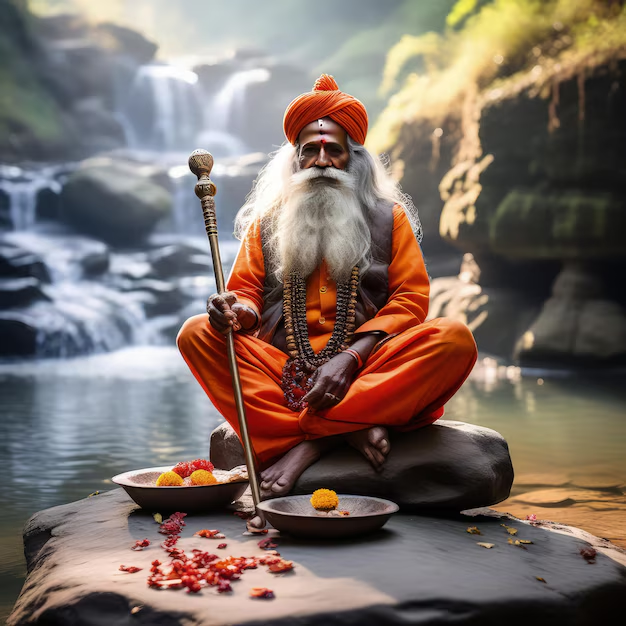
Founding and Lineage
The Nirvani Akhara, formally known as Shri Panchayati Akhada Mahanirvani, traces its roots to the 8th century CE, making it one of the oldest Shaivite monastic orders in India. Its foundation was a direct response to the need for organized spiritual resistance during times when Sanatana Dharma was under threat from foreign invasions and internal decay.
The Akhara was established by seven enlightened sadhus from the Atal Akhada, who undertook intense penance (tapasya) at Gangasagar, the confluence of the Ganges and the Bay of Bengal. There, they received the divine blessings and darshan of the sage Kapila Mahamuni, a revered Vedic rishi and philosopher. Inspired by his spiritual power and teachings, the sadhus initiated the revival of the naga tradition, giving rise to what is now called Mahanirvani Akhara.
Kapila Mahamuni is still regarded as the spiritual guru and guiding deity (upaasya dev) of Nirvani Akhara. His emphasis on renunciation, self-realization, and protection of dharma continues to form the spiritual foundation of the Akhara’s lineage.
The lineage of Nirvani Akhara flows through the Dashanami Sampradaya, founded by Adi Shankaracharya, who unified and structured the Hindu monastic order under ten recognized names (dasha-nami). Nirvani Akhara, aligning with the Shaivite path, emphasizes jnana (wisdom), yoga (discipline), and bhakti (devotion) as essential aspects of spiritual growth.
Over the centuries, the lineage has remained unbroken, passed from guru to disciple in a sacred chain of wisdom and experience. Each spiritual leader, or mahant, not only carries the tradition forward but also adapts it to the needs of the time while remaining rooted in Vedic truth.
Today, Nirvani Akhara stands as a living embodiment of this ancient lineage, continuing its mission to uphold and protect spiritual values, foster inner awakening, and guide seekers on the path of liberation.
Guru Parampara
The sacred Guru Parampara of Nirvani Akhara is a timeless spiritual lineage rooted in the Shaivite tradition, where divine wisdom is passed from master to disciple in an unbroken chain of enlightenment.
1. Origin of the Guru Parampara
The sacred lineage of Nirvani Akhara originates from Adi Guru Lord Shiva, who is revered as the first and eternal guru (Adiyogi). This divine tradition flows through great sages and saints who received the light of spiritual knowledge and passed it on through disciplined discipleship. The lineage forms the spiritual backbone of the Akhara, grounding it in timeless wisdom.
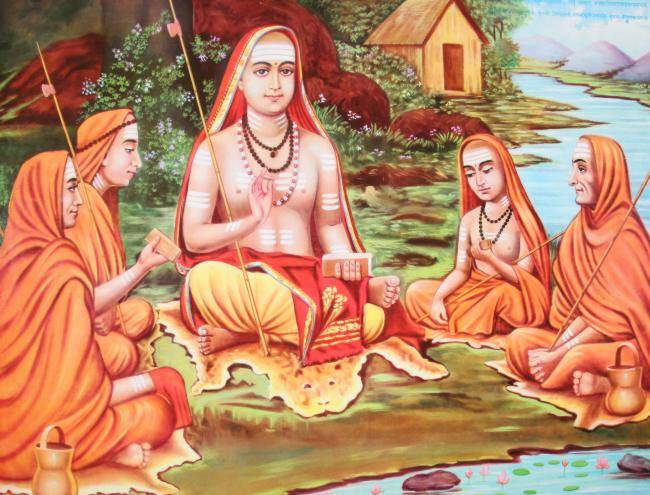
2. Role of the Guru in Nirvani Akhara
In Nirvani Akhara, the Guru is the guiding light, not only teaching scriptures but also awakening inner realization in disciples. Through strict tapasya (austerity), meditation, and transmission of shakti (spiritual energy), the Guru prepares the seeker for liberation. The guru-disciple bond is the essence of the Akhara’s strength and continuity.
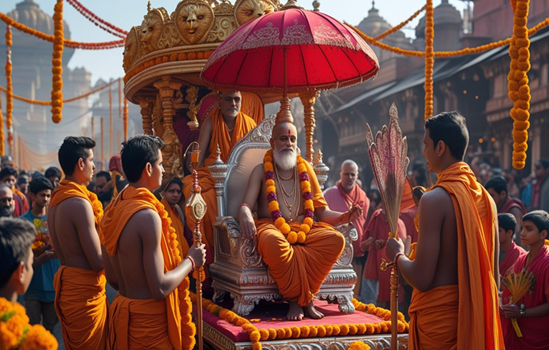
3. Legacy of Enlightened Masters
Over the centuries, the Guru Parampara has been upheld by great Mahamandaleshwars and spiritual leaders who lived lives of renunciation, devotion, and fearless dharma protection. These saints have played a vital role in guiding the Akhara’s spiritual mission, leading pilgrimages, and preserving temples and sacred knowledge.
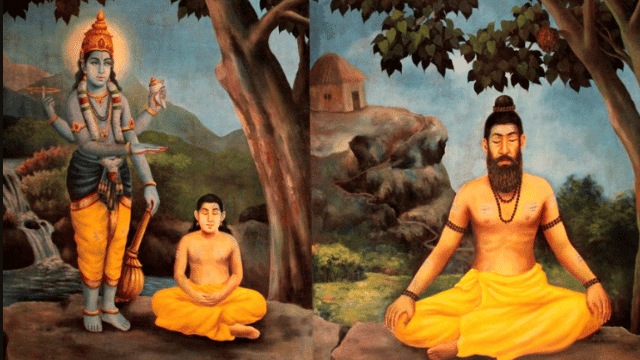
4. Continuity and Living Tradition
The Guru Parampara of Nirvani Akhara is not just history — it is a living tradition that continues to thrive in every initiated disciple and saint. Each guru initiates the next, ensuring the flame of spiritual wisdom remains eternal. This chain of enlightenment stands as a living example of divine continuity, guiding present and future generations toward the highest truth.
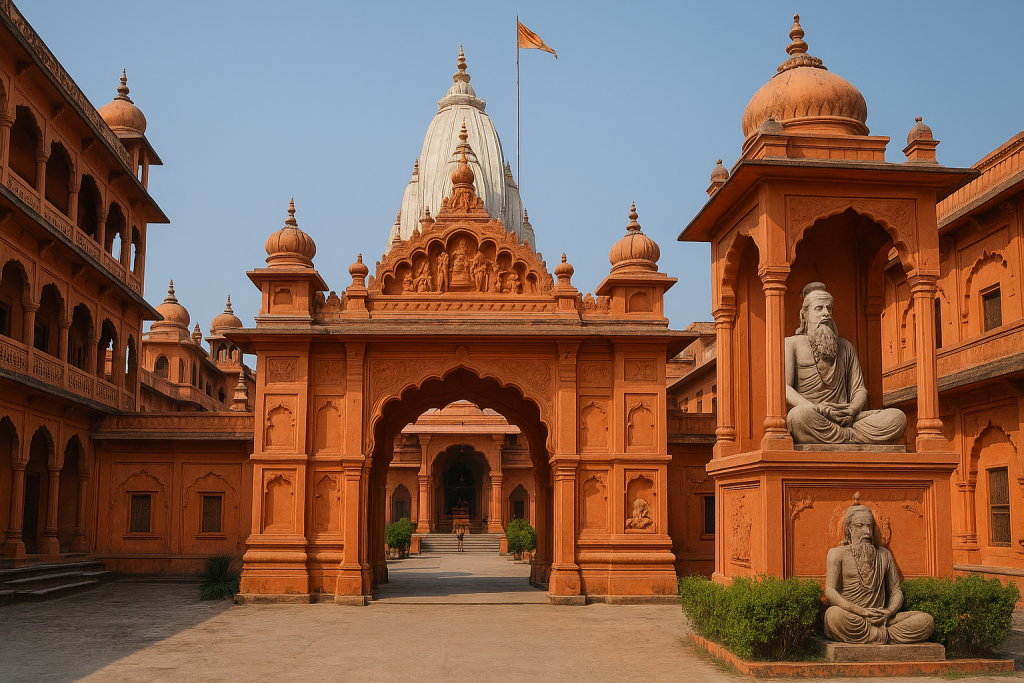
Spiritual Mission & Vision of nirvani akhara
Vision
Nirvani Akhara envisions a spiritually awakened society rooted in the timeless wisdom of Sanatan Dharma, where individuals live in harmony with themselves, nature, and the divine. Our vision is to be a beacon of light that guides humanity on the path of moksha (liberation), dharma (righteousness), and seva (selfless service).
Our vision is to:
Cultivate spiritual discipline and inner purity through renunciation, meditation, and scriptural wisdom.
Reconnect people with the true essence of Indian spirituality, beyond rituals and dogma.
Create centers of spiritual learning where tradition and transformation go hand in hand.
Build bridges between ancient wisdom and modern challenges, offering dharmic solutions for a peaceful and compassionate world.
Be a guardian of Kumbh Mela traditions and sacred pilgrimages, guiding millions toward spiritual awakening.
Mission
The mission of Nirvani Akhara is to preserve, protect, and propagate the sacred traditions of Sanatan Dharma, while guiding individuals on the path of spiritual liberation and inner awakening. As one of the oldest and most revered Shaivite Akharas, we are committed to the spiritual upliftment of humanity through devotion, discipline, service, and knowledge.
Our mission is to:
Uphold the sanctity of spiritual renunciation (sannyas) by training and supporting saints and ascetics who dedicate their lives to the pursuit of moksha.
Promote Vedic education and scriptural wisdom through traditional learning centers, discourses, and gurukuls, ensuring the timeless truths of the Upanishads, Puranas, and Agamas remain alive and accessible.
Safeguard Hindu dharma and sacred practices, including participation in and leadership of major spiritual gatherings like the Kumbh Mela, while offering spiritual guidance to devotees worldwide.
Organizational Structure
The organizational structure of Nirvani Akhara is a harmonious blend of spiritual hierarchy and disciplined administration, led by revered saints and Mahamandaleshwars who uphold dharma, tradition, and unity within
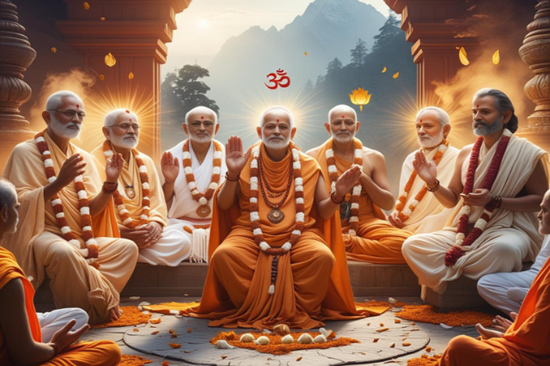
Mahamandaleshwar
The Mahamandaleshwars are the highest spiritual and administrative authorities within Nirvani Akhara. They are highly respected saints chosen for their deep spiritual wisdom, leadership, and service to Sanatan Dharma. Mahamandaleshwars guide the Akhara’s direction, represent it during Kumbh Melas, and initiate senior disciples into ascetic life. They play a key role in safeguarding the Akhara’s traditions and values across generations.

Panch
The Panch is a council of senior saints who serve as advisors and decision-makers within the Akhara. This five-member spiritual body assists the Mahamandaleshwars in important matters of policy, discipline, and spiritual affairs. The Panch maintains harmony within the Akhara, resolves internal issues, and ensures all members adhere to the Akhara’s code of conduct and dharmic principles.
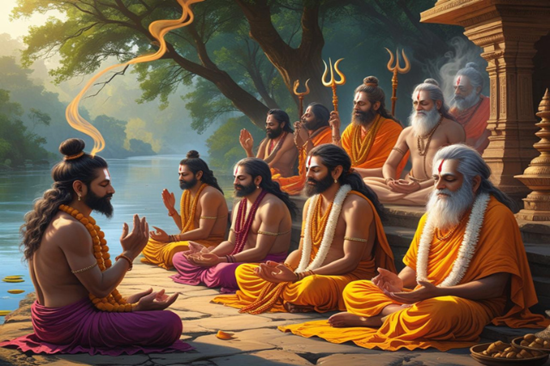
Sadhus and Saints
The spiritual strength of Nirvani Akhara lies in its sadhus and saints, who live a life of renunciation, meditation, and selfless service. These initiated monks undergo rigorous spiritual training and are guided by their gurus. They play a vital role in religious ceremonies, temple rituals, public discourses, and spreading dharma across society. Many take part in pilgrimages, charitable work, and serve as living examples of dharmic living.
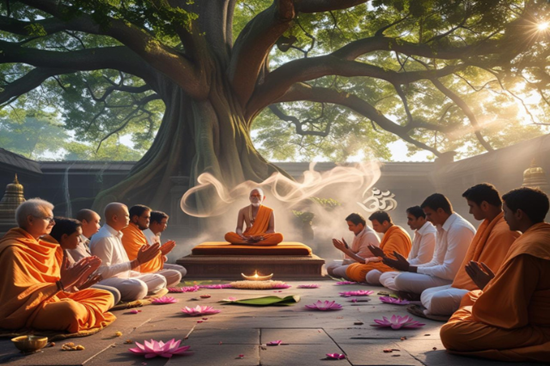
Disciples and Initiates
At the foundation of the Akhara’s future are its disciples and newly initiated members, who are nurtured through strict discipline, study, and service. Under the guidance of senior gurus and saints, they gradually prepare to take on greater spiritual responsibilities. This stage ensures the continuity of the Akhara’s guru parampara and the preservation of its sacred traditions.
A Legacy of Spiritual Power and Eternal Dharma
For centuries, Nirvani Akhara has stood as a pillar of Sanatan Dharma — nurturing saints, guiding seekers, and protecting sacred traditions. Rooted in divine wisdom and led by enlightened masters, the Akhara continues to inspire spiritual awakening and uphold the path of truth, renunciation, and service to humanity.
